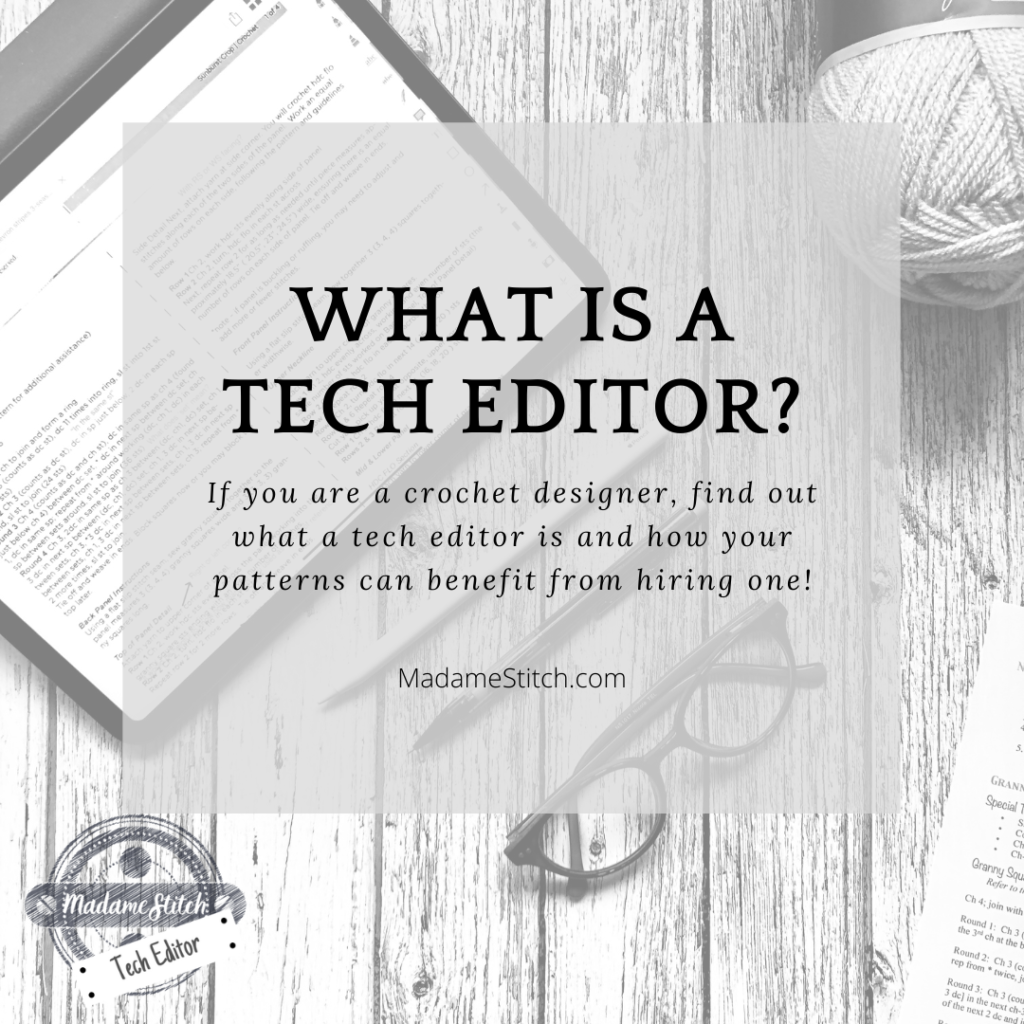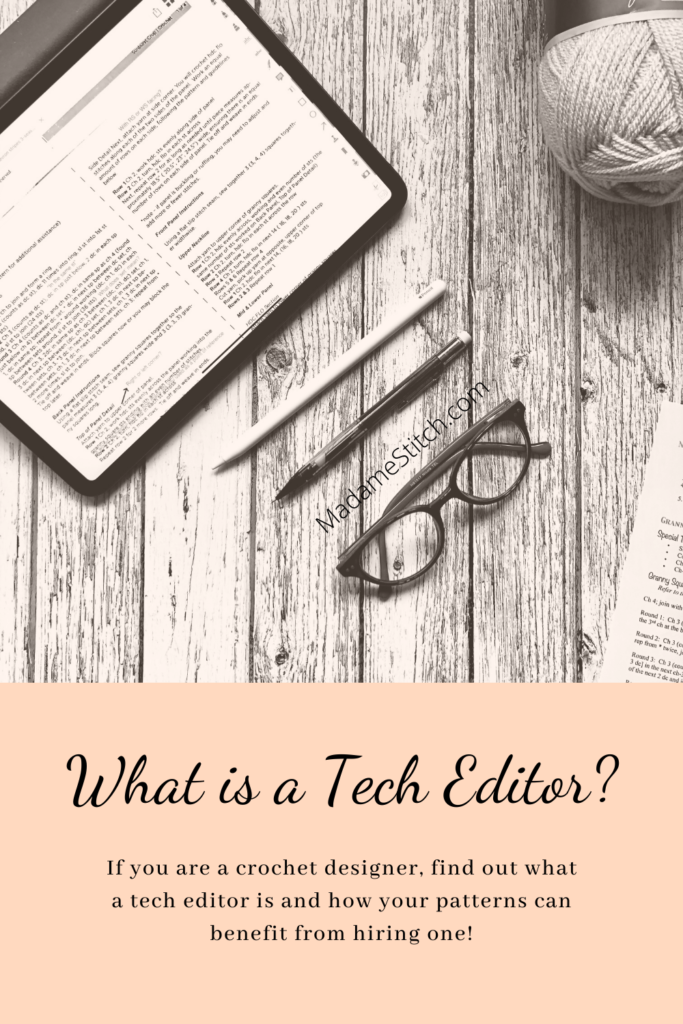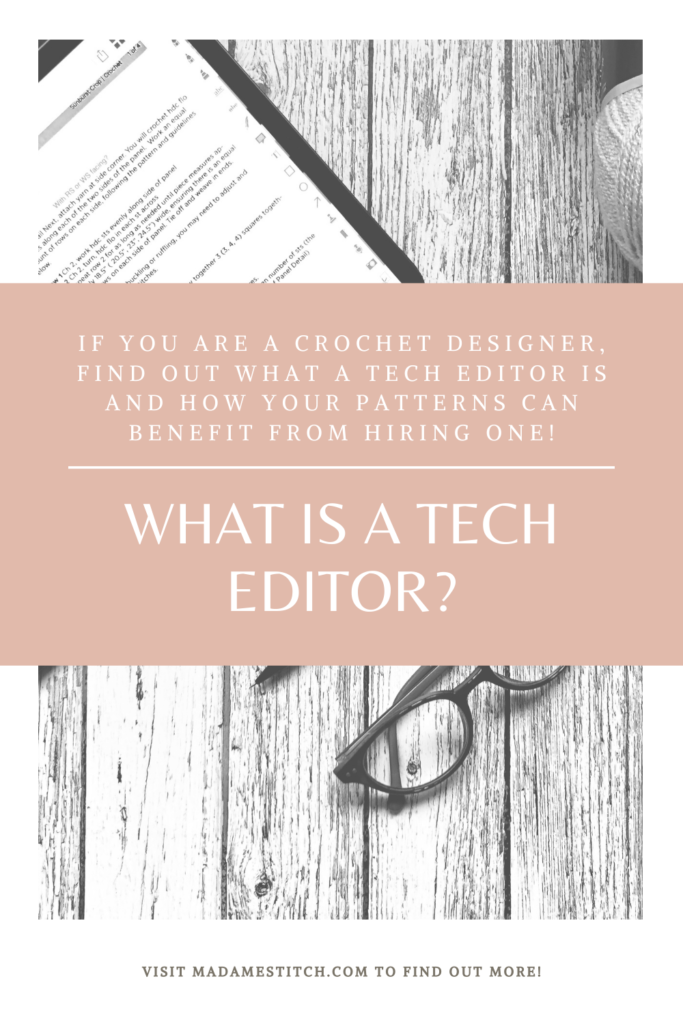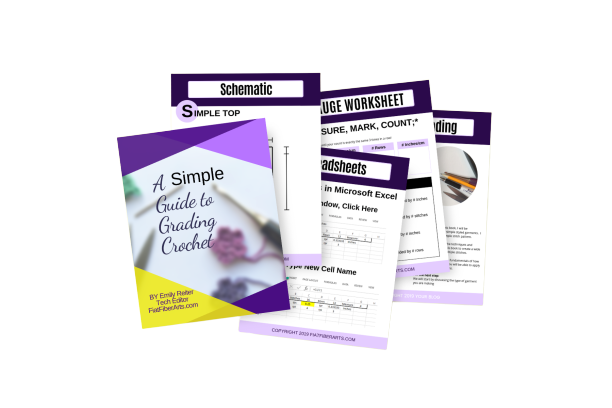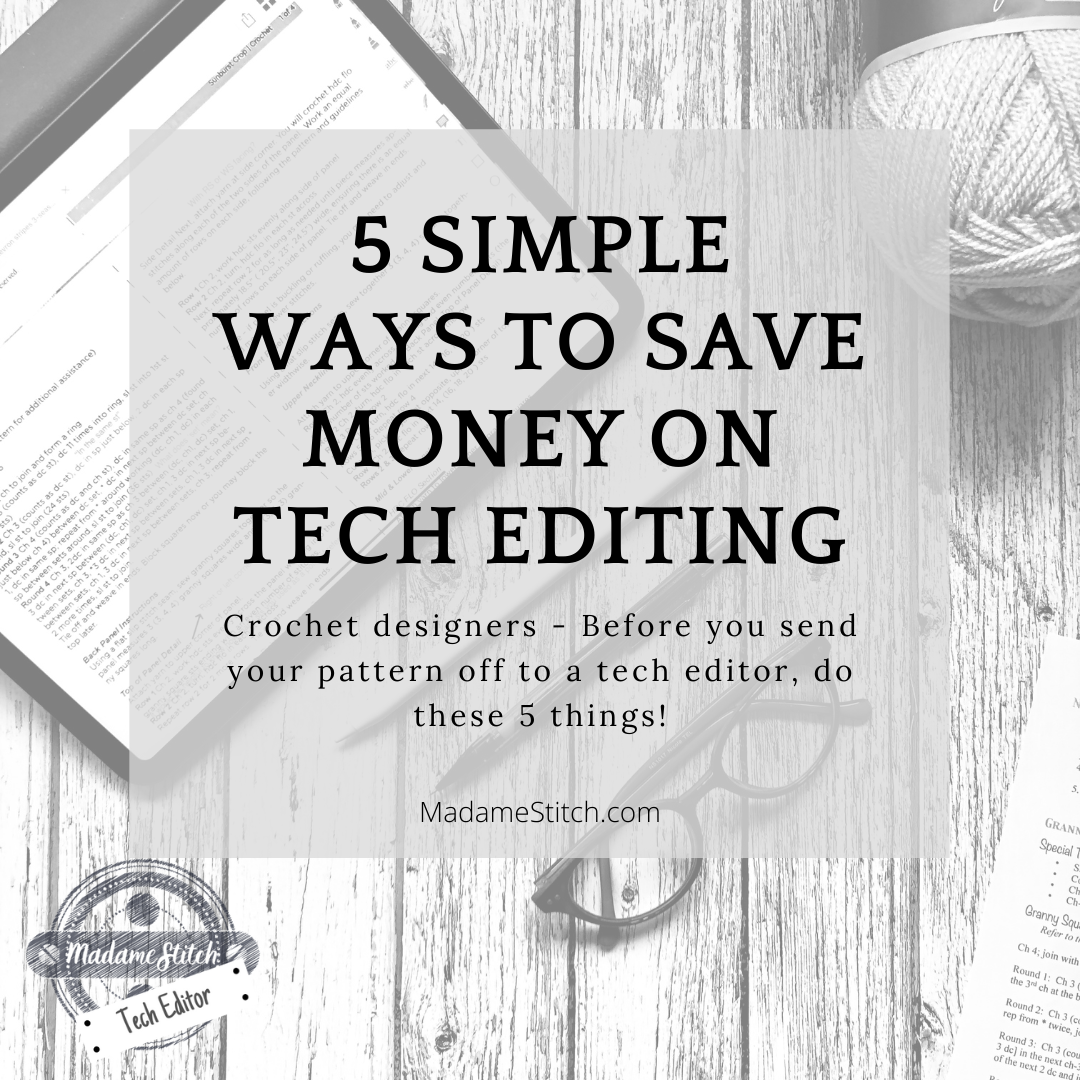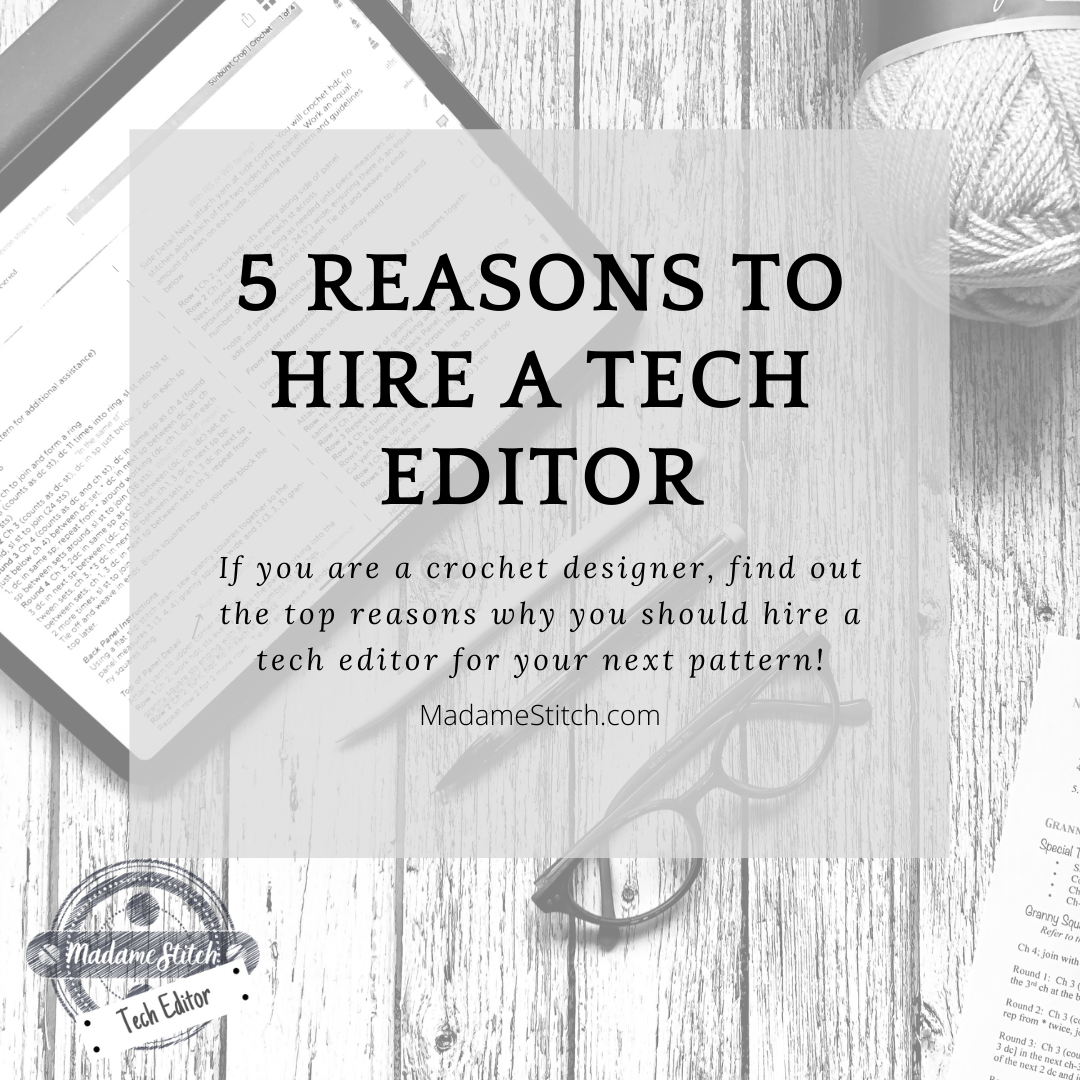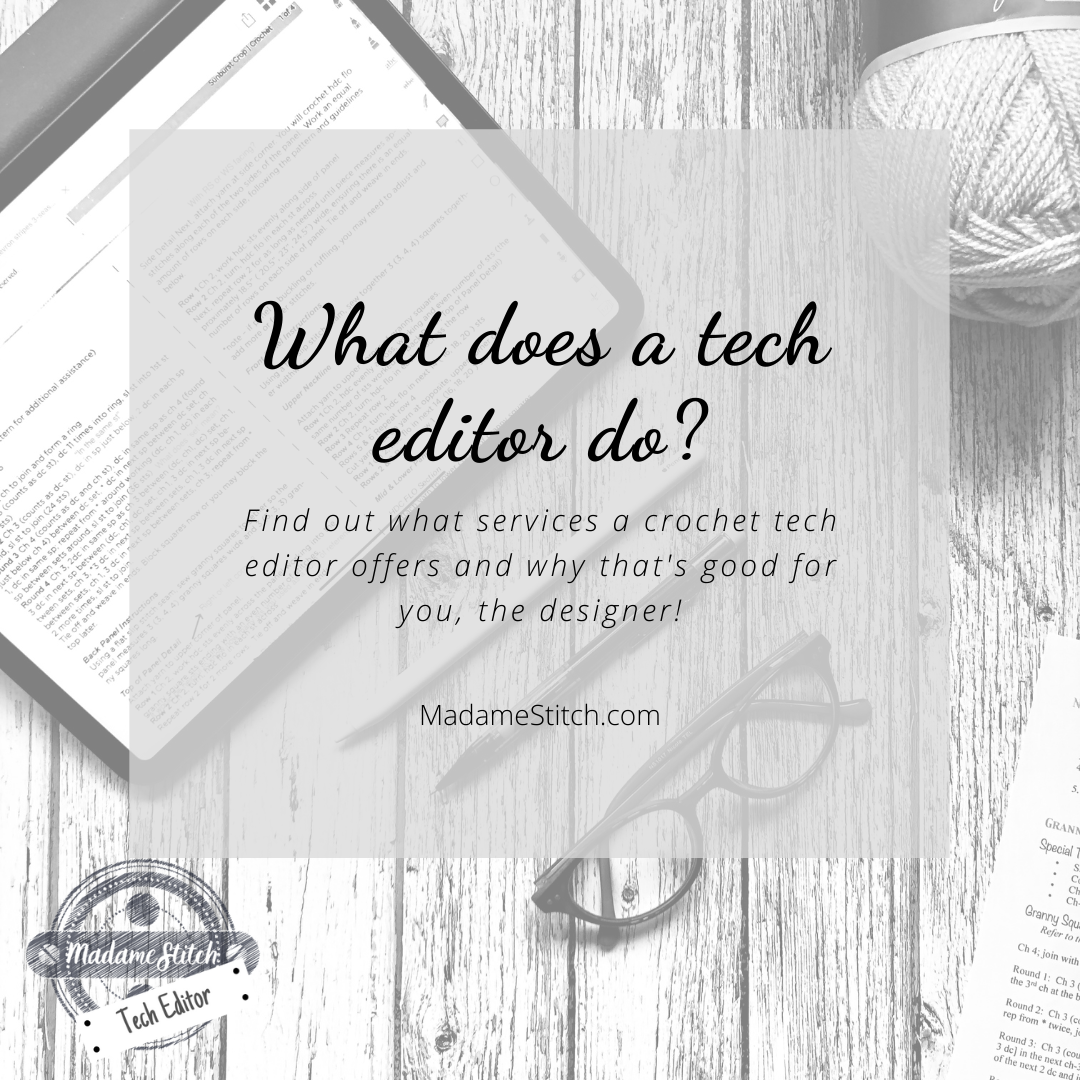What is a tech editor?
You’ve designed a beautiful crochet object and written a pattern for it. Now it’s published and you’re getting a bunch of emails and comments about mistakes you missed and questions that need to be answered. You checked the pattern multiple times before you hit publish. So, what went wrong?
You might need a tech editor.
Designing an item and publishing a pattern involves more than just producing written instructions. Imagine a product on the market that gets numerous bad reviews about things that don’t work, even though the product looks amazing. Nobody wants to buy that product now. You certainly don’t want that to happen to your patterns, do you?
That’s where a tech editor comes in. She provides a fresh pair of expert eyes to look at your pattern, the one you so meticulously and lovingly put together, for any mistakes. Think of your tech editor as a collaborating partner, an essential partner in the process of pattern writing. If you want to publish your patterns with confidence, tech editing is a necessary and critical step.
What is a tech editor?
Their main job is to check a written pattern for errors and inconsistencies. A tech editor has the experience and training to see a pattern at its most detailed level, looking at a pattern with great care, right down to the punctuation and spacing you use. Read on for more details about tech editors and what they can do for you, the designer.
A tech editor has an eye for detail.
I’m not kidding you when I say that a space between 2 words that’s too big jumps right off the page at me. When I read through some, it nearly slaps me in the face if the spelling or grammar is wrong. That doesn’t make me a superhero. That’s a skill that every tech editor should have. Because, it’s the little things that count! They can see the smallest of details and the big picture at the same time.
A tech editor helps a designer build a reputation for excellence and professionalism.
Besides the amazing designs, the most important aspect of any design business is building a reputation – a reputation for consistency, for patterns a maker can trust, each and every time. If a designer’s patterns are riddled with errors of any kind or difficult to decipher, it won’t be long before customers stop coming by the shop. Word gets around. And, those reviews on Etsy? Yeah, they can matter. The moral of the story is that a great tech editor helps you put your best foot forward.
[wpipa id=”7890″]
A tech editor gives you the confidence to publish your patterns.
Think about it. You’ve spent so much time dreaming about the design, working it out by making it, taking diligent notes, and carefully writing the instructions. But, what if you’ve left out a section or information critical to the design? What if there are still mistakes? Will your customers be able to understand what you’re trying to say? A tech editor looks critically at your pattern, with no judgement, I might add, in order to give you the confidence you need to have no reservations about publishing that beautiful design you want to share with the world.
A tech editor collaborates.
A crochet tech editor is the expert in the room. But the designer is the heart and soul in the room. A great tech editor knows that two-way communication is key to completing the edit. Who has the final say in what goes in a pattern? Why, the designer, of course! A designer can rely on the editor’s expertise to guide decisions, but the final one always rests with the designer.
A tech editor preserves your unique voice while steering you toward industry standards.
Lately, it’s been recognized within the crochet industry that there hasn’t been a standard set of ‘rules’ for writing crochet instructions. Sure, some things have been understood through time and practice. But, if you’ve ever picked up a new (to you) pattern and noticed that it took a bit to understand what the designer was trying to say, it’s probably because of how the designer wrote the instructions. Even though there are lots of ways to write the same instruction, sometimes the tech editor should the best and most concise way.
[wpipa id=”7733″]
A tech editor should be available to work on a pattern promptly.
You want a tech editor to be in high demand, right? I mean, doesn’t that mean she’s a great tech editor? Well, yes, but, if she can’t take you on as a client, she doesn’t do you much good. The turnaround time for most work (unless it’s a super long or complicated pattern) should be about a week or two from the time the designer submits the pattern to the time the final revision and invoice are sent out. Longer than that and things can start to get confusing and lost. While I keep excellent records and answer correspondence immediately, things can still get away from me. I make sure I can deliver an edit in a timely fashion or I don’t take it.
That’s what a tech editor is.
Special bonus! If you are a designer of crochet garments looking to learn to grade, click HERE to purchase “A Simple Guide to Grading Crochet” by Emily Reiter of FiatFiberArts. A must-have resource!
In the next installment, you’ll find out the 5 reasons you need to hire a tech editor for your next pattern. Sign up for the email list below ☟ and be the first to know.

